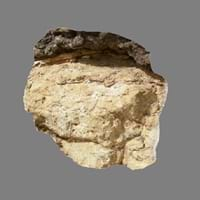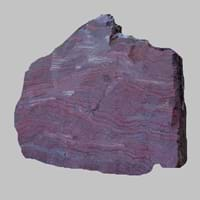Definition
Laterite rock is a type of Sedimentary rock which is rich in iron and aluminium, formed in hot and wet tropical areas
Banded iron formation are distinctive units of sedimentary rock that are almost always of Precambrian age
Origin
India
Western Australia, Minnesota
Discoverer
Francis Buchanan-Hamilton
Unknown
Etymology
From Latin later brick, tile + -ite1
From its formation process
Class
Sedimentary Rocks
Sedimentary Rocks
Sub-Class
Durable Rock, Soft Rock
Durable Rock, Medium Hardness Rock
Group
Not Applicable
Not Applicable
Other Categories
Fine Grained Rock, Opaque Rock
Coarse Grained Rock, Opaque Rock
Texture
Earthy, Massive, Porphyritic
Banded, Trellis
Color
Brown, Buff, Red
Red, Reddish Brown
Durability
Durable
Durable
Appearance
Rough and Banded
Layered, Banded, Veined and Shiny
Interior Uses
Decorative Aggregates, Flooring, Interior Decoration
Decorative Aggregates, Homes
Exterior Uses
As Building Stone, As Facing Stone, Garden Decoration
Paving Stone, Office Buildings
Other Architectural Uses
Curbing
Curbing, Whetstones
Construction Industry
Cobblestones, for Road Aggregate, Landscaping, Roadstone
As Dimension Stone, Used for flooring, stair treads, borders and window sills.
Medical Industry
Not Yet Used
Not Yet Used
Antiquity Uses
Artifacts, Monuments, Sculpture
Artifacts
Commercial Uses
An Oil and Gas Reservoir, Source of bauxite, Used in aquariums
As a touchstone, Cemetery Markers, Creating Artwork
Types
Not Available
Algoma-type , Lake Superior-type, Superior-type and Taconite
Features
Is one of the oldest rock, Very fine grained rock
Is one of the oldest rock
Archaeological Significance
Monuments
Used
Not Yet Used
Famous Monuments
Data Not Available
Not Applicable
Sculpture
Used
Not Yet Used
Famous Sculptures
Data Not Available
Not Applicable
Pictographs
Used
Not Used
Petroglyphs
Used
Not Used
Figurines
Used
Not Yet Used
Formation
Laterite is a type of sedimentary rock which is generally a reddish weathering product of basalt.
The banded iron layers are formed in sea water when oxygen is released by photosynthetic cyano-bacteria. The oxygen then combines with dissolved iron in ocean to form insoluble iron oxides, which precipitated out, forming a thin layer of banded iron formation on ocean floor.
Mineral Content
Aluminum Oxides, Biotite, Hematite, Hornblade, Iron Oxides, Manganese Oxides, Micas, Muscovite or Illite, Plagioclase, Pyroxene
Hematite, Magnetite, Quartz
Compound Content
Aluminium Oxide, CaO, Iron(III) Oxide, FeO, Potassium Oxide, MgO, MnO, Sodium Oxide, Phosphorus Pentoxide, Silicon Dioxide, Titanium Dioxide
Fe, Iron(III) Oxide, Silicon Dioxide
Types of Metamorphism
Not Applicable
Not Applicable
Types of Weathering
Biological Weathering, Chemical Weathering
Chemical Weathering
Types of Erosion
Chemical Erosion, Water Erosion, Wind Erosion
Coastal Erosion, Wind Erosion
Grain Size
Fine Grained
Large and Coarse Grained
Fracture
Conchoidal
Uneven, Splintery or Conchoidal
Porosity
Highly Porous
Highly Porous
Cleavage
Not Applicable
Imperfect
Toughness
Not Available
1.5
Specific Gravity
Not Available
5.0-5.3
Transparency
Opaque
Translucent to Opaque
Density
Not Available
Not Available
Specific Heat Capacity
Not Available
Resistance
Heat Resistant, Pressure Resistant
Heat Resistant, Impact Resistant, Pressure Resistant, Wear Resistant
Deposits in Eastern Continents
Asia
India
China, India, Iran, Iraq, Oman, Russia, Saudi Arabia, Taiwan, Thailand, Vietnam
Africa
East Africa, Western Africa
Kenya, Morocco, South Africa, Tanzania
Europe
England, Romania, Scotland
Austria, France, Greece, Italy, Malta, Poland, Portugal, Serbia, Spain, Sweden, United Kingdom
Others
Not Yet Found
Greenland, Mid-Atlantic Ridge
Deposits in Western Continents
North America
Canada, USA
Canada, Mexico, USA
South America
Not Yet Found
Bolivia, Brazil
Deposits in Oceania Continent
Australia
Central Australia, Western Australia
New South Wales, Queensland, South Australia, Western Australia










